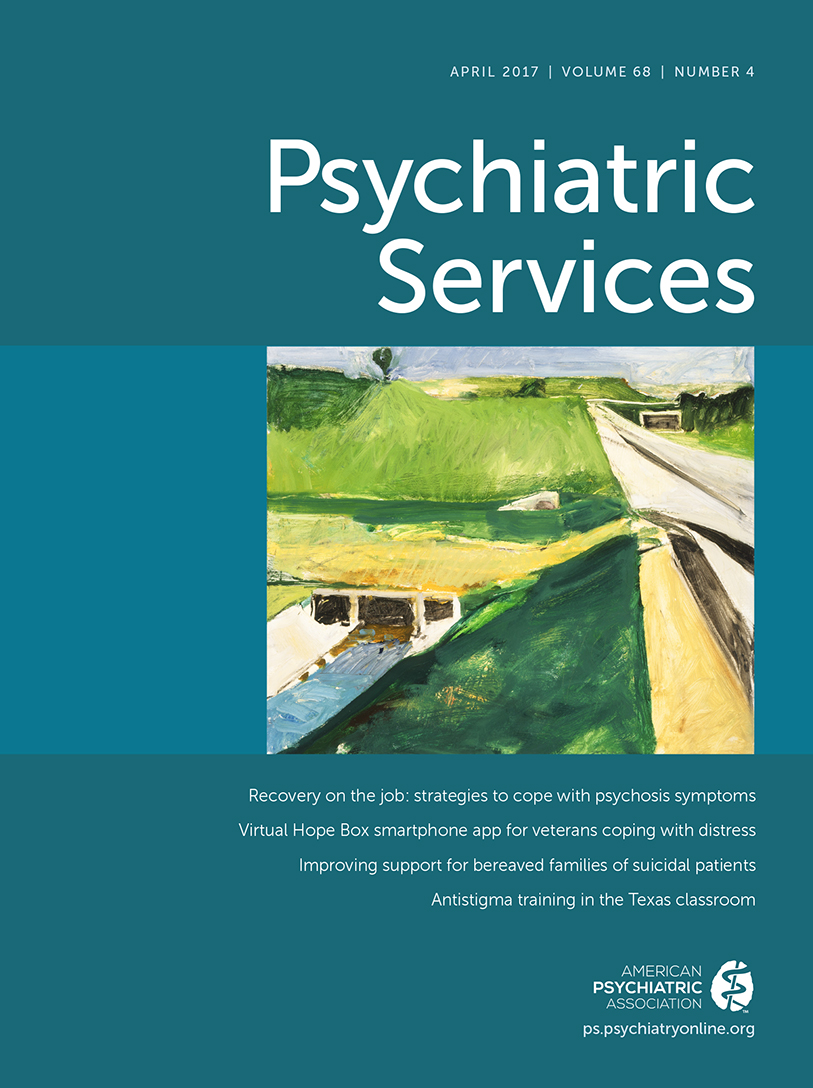Effects of Family-to-Family Psychoeducation Among Relatives of Patients With Severe Mental Disorders in Mexico City
References
- 1 : Subjective burden over 12 months in parents of patients with schizophrenia. Archives of Psychiatric Nursing 17:126–134, 2003 Crossref, Medline, Google Scholar
- 2 : Recent developments in family psychoeducation as an evidence-based practice. Journal of Marital and Family Therapy 38:101–121, 2012 Crossref, Medline, Google Scholar
- 3 : An evaluation of the NAMI basic program. Journal of Child and Family Studies 21:439–442, 2012 Crossref, Google Scholar
- 4 : Peer support and peer-led family support for persons living with schizophrenia. Current Opinion in Psychiatry 27:216–221, 2014 Crossref, Medline, Google Scholar
- 5 : Evidence-based practices for services to families of people with psychiatric disabilities. Psychiatric Services 52:903–910, 2001 Link, Google Scholar
- 6 : Improving knowledge about mental illness through family-led education: the Journey of Hope. Psychiatric Services 59:49–56, 2008 Link, Google Scholar
- 7 : Outcomes of a randomized study of a peer-taught Family-to-Family Education Program for mental illness. Psychiatric Services 62:591–597, 2011 Link, Google Scholar
- 8 : Expressed Emotion in Families: Its Significance for Mental Illness. New York, Guilford Press, 1985 Google Scholar
- 9 : Cultural variability in the manifestation of expressed emotion. Family Process 48:179–194, 2009 Crossref, Medline, Google Scholar
- 10 : Expressed emotion and relapse of psychopathology. Annual Review of Clinical Psychology 3:329–352, 2007 Crossref, Medline, Google Scholar
- 11 : An acceptance-based psychoeducation intervention to reduce expressed emotion in relatives of bipolar patients. Behavior Therapy 39:375–385, 2008 Crossref, Medline, Google Scholar
- 12 : Family-to-family: a trauma-and-recovery model of family education. New Directions for Mental Health Services 77:33–41, 1998 Crossref, Medline, Google Scholar
- 13 : The Family Questionnaire: development and validation of a new self-report scale for assessing expressed emotion. Psychiatry Research 109:265–279, 2002 Crossref, Medline, Google Scholar
- 14 : Effect of a family psychoeducational program on relatives of schizophrenia patients. Psychiatry and Clinical Neurosciences 62:379–385, 2008 Crossref, Medline, Google Scholar
- 15 : Interventions to improve the experience of caring for people with severe mental illness: systematic review and meta-analysis. British Journal of Psychiatry 206:268–274, 2015 Crossref, Medline, Google Scholar



